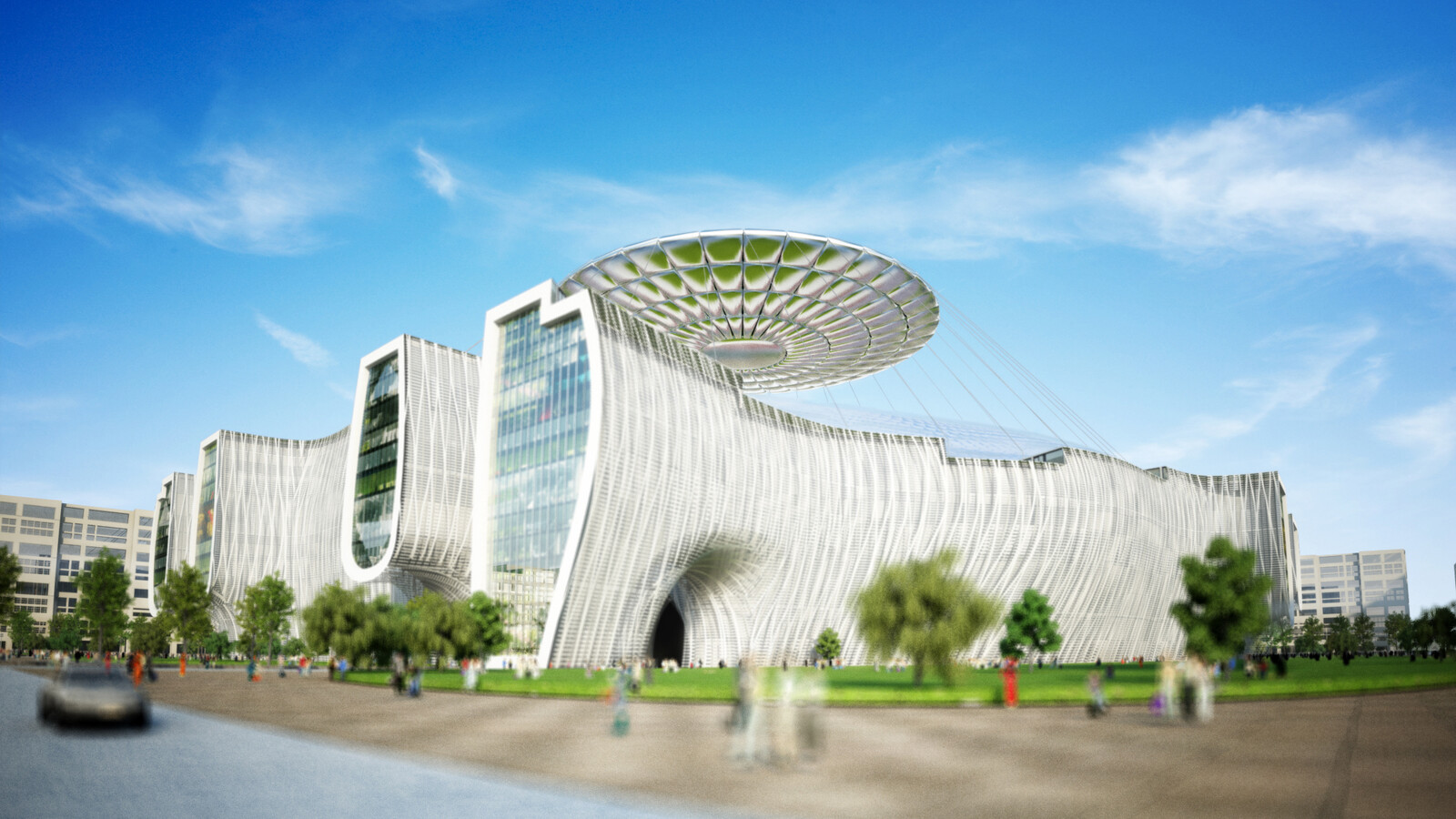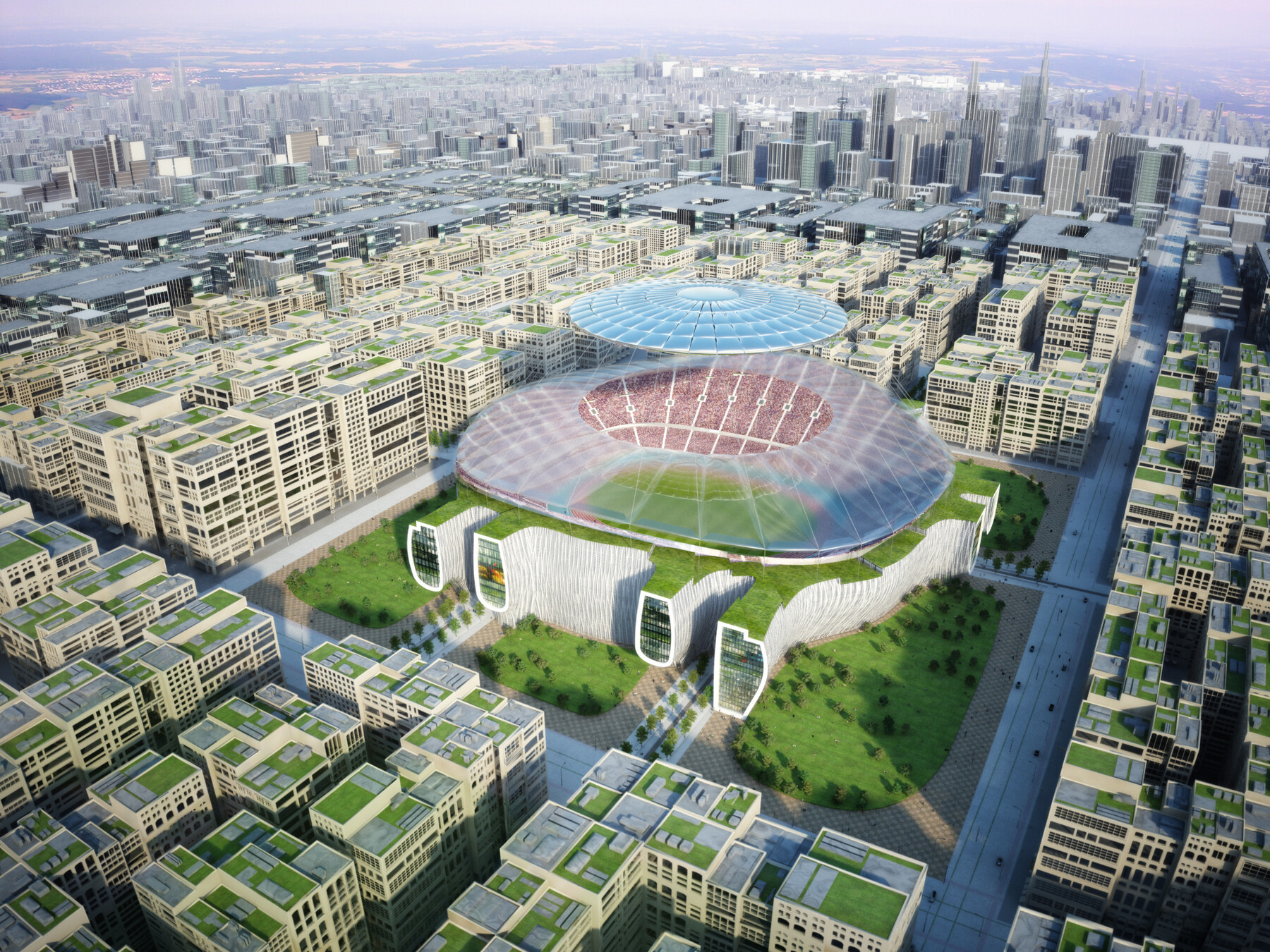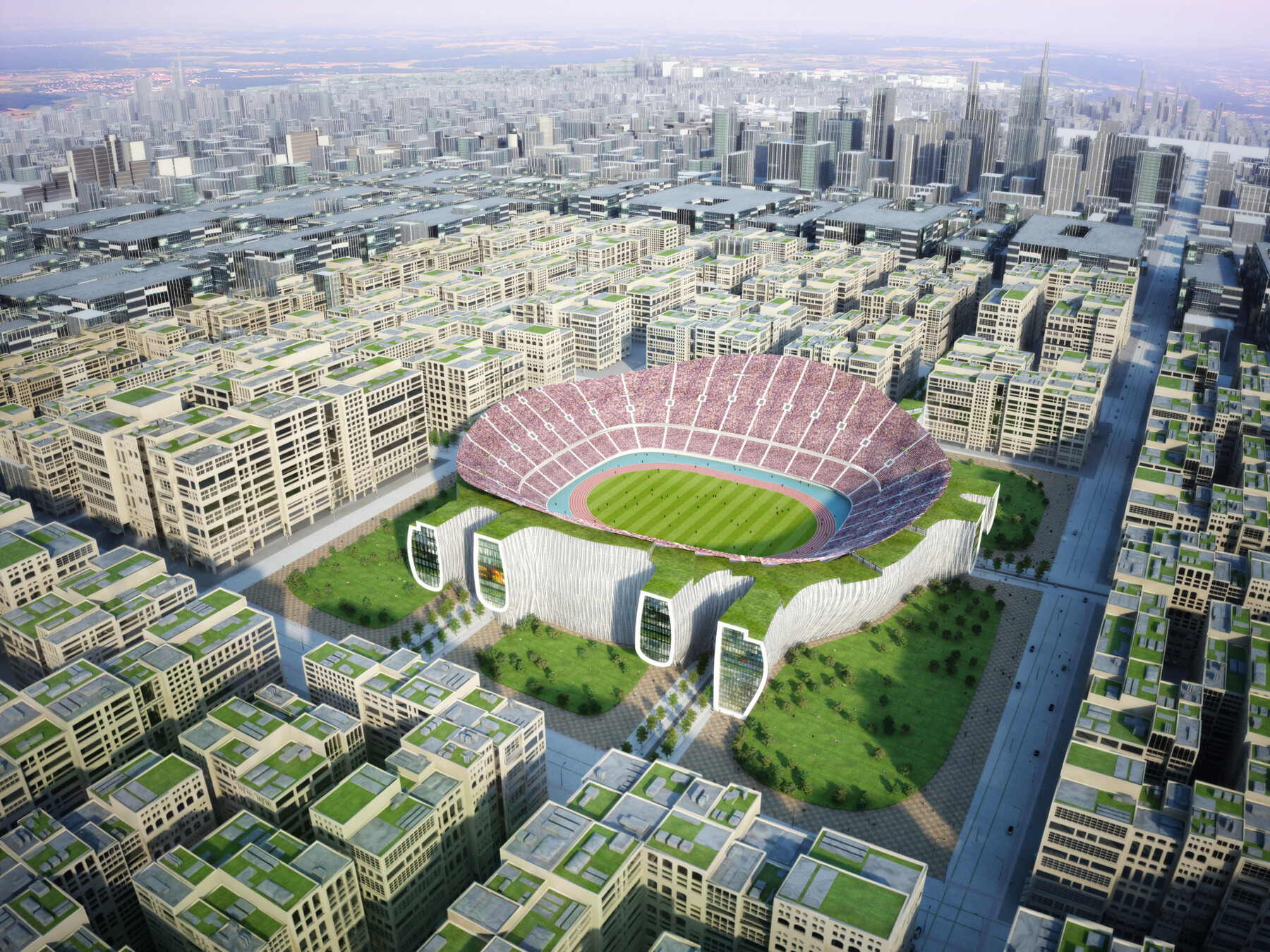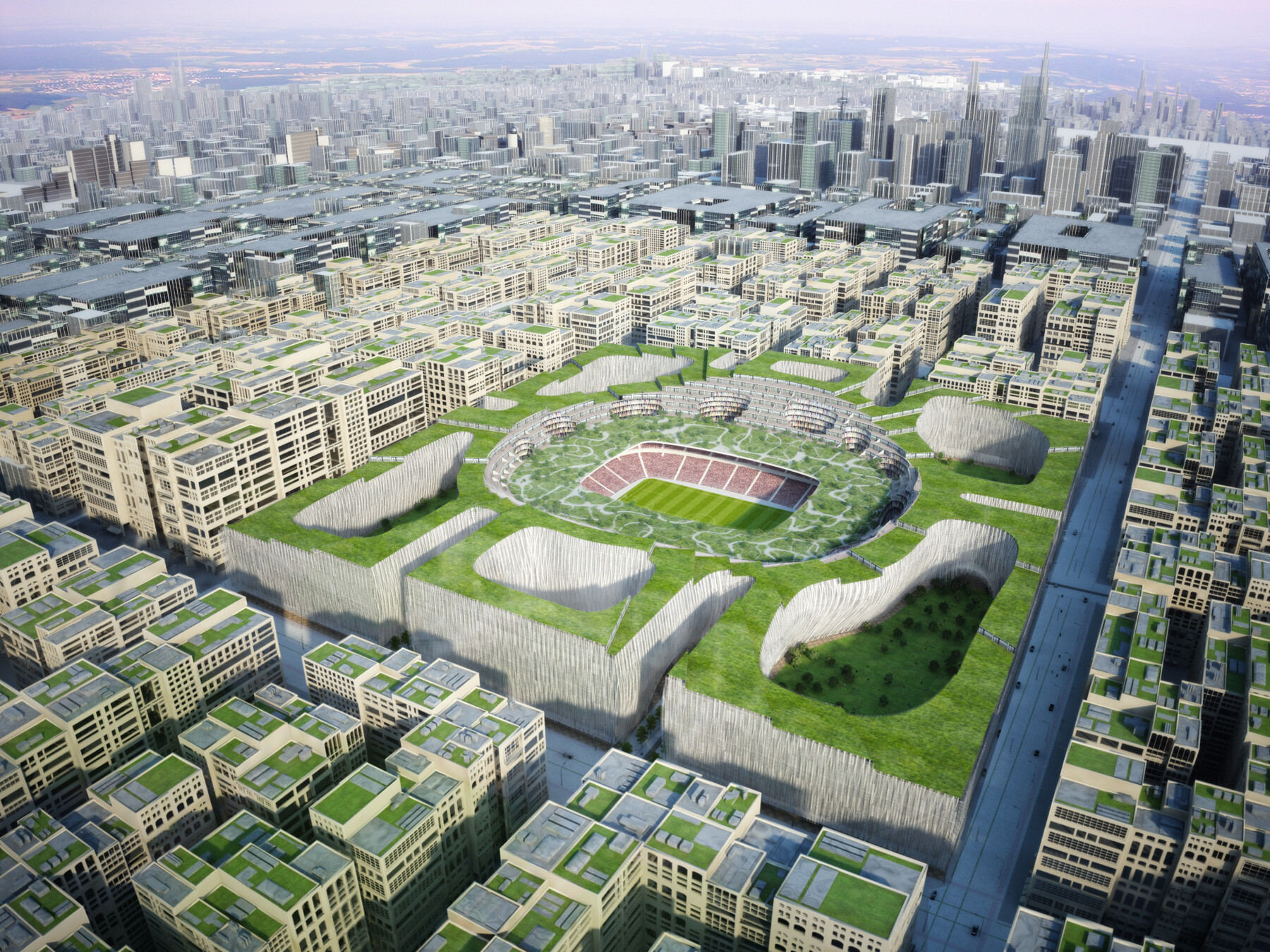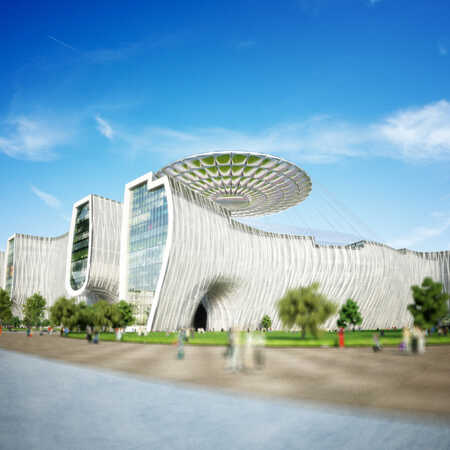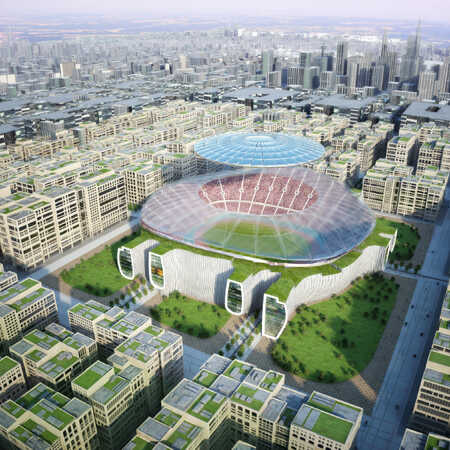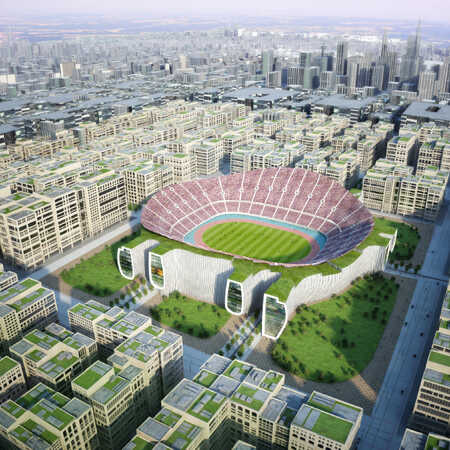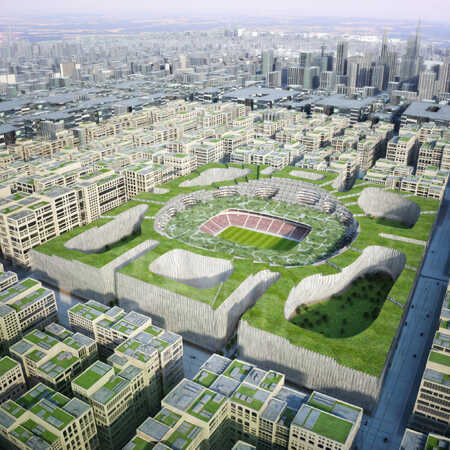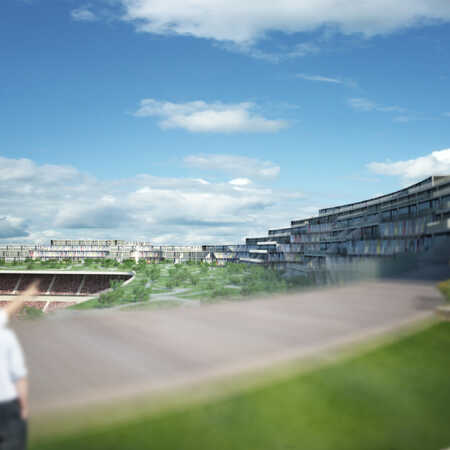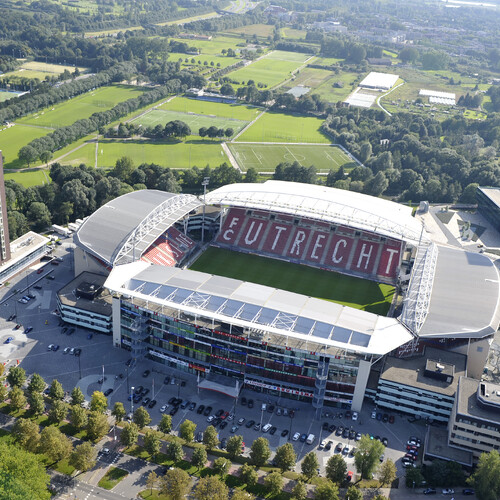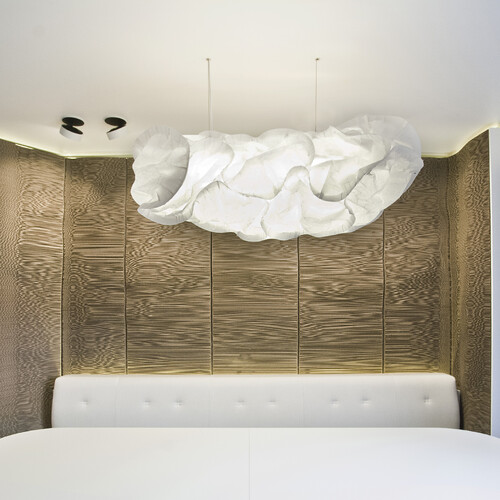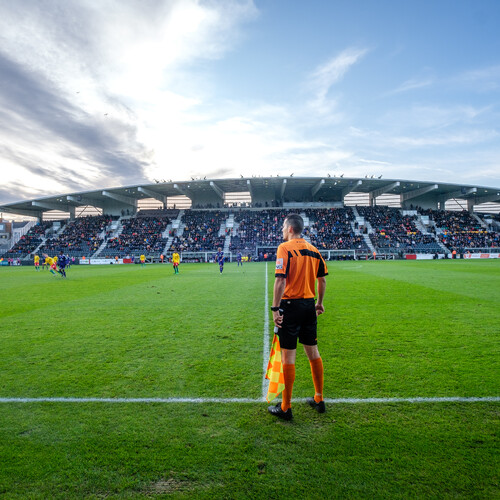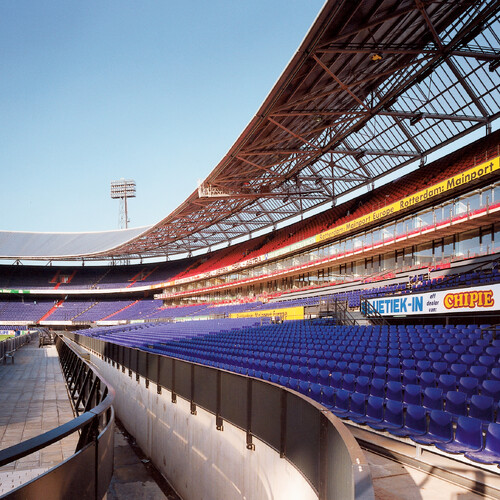A difficult type of building
An ideal stadium is first and foremost a sports facility that allows large crowds of spectators to arrive and park their car, offers pleasant seating and caters for all sorts of comfort such as food and drinks, restrooms, broadband internet and entertainment apart from the game itself. This all together with an optimal view of the playing field, bright lighting and good acoustics.
Being a complex structure that has to meet high quality standards and is only used infrequently but then very intensively, a stadium is a difficult type of building. To finance, to operate and to outfit with the right infrastructure. That is the reason why for a long time stadiums were built outside the cities, on cheap land, close to motorways and surrounded by discount malls. That is far from ideal. It is inefficient and leaves the potential that a stadium can offer the city and its residents largely unused.
